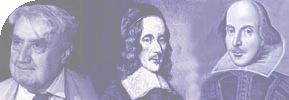I came across your blog while doing some research for my PhD on Shakespearean actors. Your page about the actor Humphrey Jeffes and his brother is enticing, and I’m wondering if you might be able to connect me to any sources from which you derived the information, specifically about the brothers being twins.
This is the page I’m referring to:
Answer
This presentation is part of a reconstruction of the first night of Romeo & Juliet as it may have been performed on Wednesday 31 July 1594. And reconstruction is a scientific method of bridging gaps in the available knowledge. For that reason, each player has the facts mentioned that connects him to the Chamberlain’s Men. If not with a proper source-indication, I used my standard sources :
- David Kathman : Reconsidering The Seven Deadly Sins (Early Theatre 7.1 : 2004)
my reconstruction of the original cast of Romeo and Juliet produces an independent
duplication of its correction of the plot sheet’s dating - Wikipedia : King’s Men personnel
To my knowledge there is no evidence that proves the Jeffes brothers of equal age. And in consequence my research has been restricted to showing it a plausible part of Shake-speare’s design for 1 Henry VI : the deployment of twins rewrites the historical nonsense of scene 4 ; 3 (5 ; 3 in the Internet Shakespeare Edition) as rather inventive logic :
In the battle of Paris (8 September 1429 ; the year of Queen Margaret’s birth),
- York captures the pregnant nemesis of Talbot (17)
- Suffolk captures the future nemesis of York (and England)
- England strikes back after the recent defeat at “Bordeaux” (Castillon ; 17 July 1453)
From which follows that Margaret is pregnant. Of a son (born 13 – 10 – 1453) who will die in 3 Henry VI at the age of 17
- in the same pretentious spirit as La Pucelle
- in the same circumstances as La Pucelle
- in York’s revenge on Margaret
- in the likeness of a female soldier
the part is evidently written for a high voice
In short : Shakespeare’s Margaret is a Pucelle in woman’s dress. And in the scene’s next section (scene 5 ; 4) the nemesis indeed claims Margaret’s great ancestry. She also declares herself responsible for the Wars of the Roses. Which conflict was to be initiated in 1455 by Queen Margaret.
The result is a scene in which
- no audience will consider the possibility of La Pucelle’s actor to double as Margaret
- no playwright will consider the option of casting two different actors
A conflict that is easily resolved by brothers of similar countenance. To which effect the deployment of twins would be perfect. And the ranks of The Lord Chamberlain’s Men include the brothers Anthony and Humphrey Jeffes as likely candidates.
A younger brother would give Margaret a more feminine voice than La Pucelle, which is a tempting option, because it makes her the more attractive woman. Just as the scene apparently introduces her. However, this option goes at the cost of La Pucelle’s credibility as a most charming witch. While the part of Queen Margaret in 2 & 3 Henry VI seems to me rather challenging for a single youth. A problem that Shakespeare – according to my own reconstruction of the first night of Romeo & Juliet – could solve without resorting to look-alikes.
Balancing the evidence, I prefer twins.
But I can be wrong.
